GOLD Learning Tongue-tie Online Symposium 2020
The GOLD Learning Online Tongue-tie Symposium 2020 lecture pack provides the latest research, perspectives and best practice when working with infants with oral restrictions and their families.
This lecture series pack is a combination of two parts of focus - Fundamental Skills and Emerging Topics. With a focus on fundamental skills, learn about how tongue-tie impacts the mechanics of breastfeeding, the importance of referral and collaboration, critical assessment skills and how to distinguish tongue-tie from other restrictions, understanding the complexities of tongue-tie and management of breastfeeding when frenotomy is not possible.
Among the emerging topics presentations, dive deeper into the complex topic of oral restrictions in infants. Learn about new perspectives on how we measure a "complete" release after frenotomy, bleeding post division, re-attachment and re-release, a chiropractic approach to tongue-tie and the PIPS technique, and the difference between the active wound management stage and the neuromuscular re-education phase after frenotomy.
These lectures will leave you feeling more confident and armed with clinical skills that you can put into practice right away to help the families in your care.
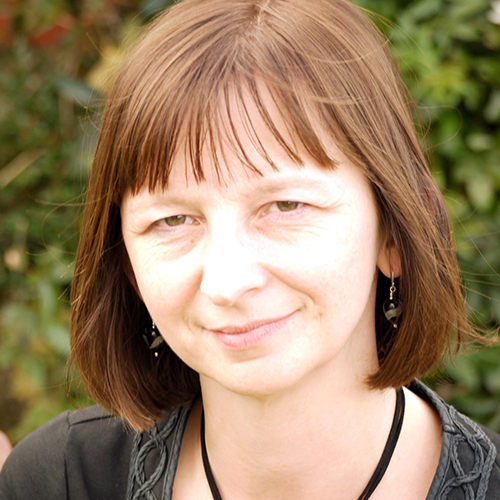

Sarah is a Registered General Nurse, Health Visitor, International Board Certified Lactation Consultant and Tongue-tie Practitioner with a busy private practice based in Cambridgeshire, UK. Sarah worked as a volunteer breastfeeding counsellor for the Association of Breastfeeding Mothers for several years and continues to run a weekly breastfeeding support group as a volunteer. Sarah is a founder member and former Chair of The Association of Tongue-tie Practitioners in the UK and is the author of the book, ‘Why Tongue-tie Matters’. She offers an online course in tongue-tie and infant feeding in association with Babyem and provides education on infant feeding and tongue-tie for healthcare professionals and breastfeeding supporters in the public, private and volunteer sectors.
Topic: Is This a Tongue-Tie: How Do We Decide? - [View Abstract]
Topic: The Elephant In The Room - Bleeding Post Tongue-Tie Division - [View Abstract]
1. Describe what constitutes abnormal bleeding post tongue-tie division.
2. List potential risk factors for abnormal bleeding.
3. Explain how abnormal bleeding may be managed post division.
This presentation explores professional and lay perspectives on bleeding post tongue-tie division. It will examine what constitutes abnormal bleeding and why this may occur. Risk assessment and reduction will be discussed. Management strategies that have been found to be effective, along with the development of guidelines on bleeding by the Association of Tongue-tie Practitioners will be described.
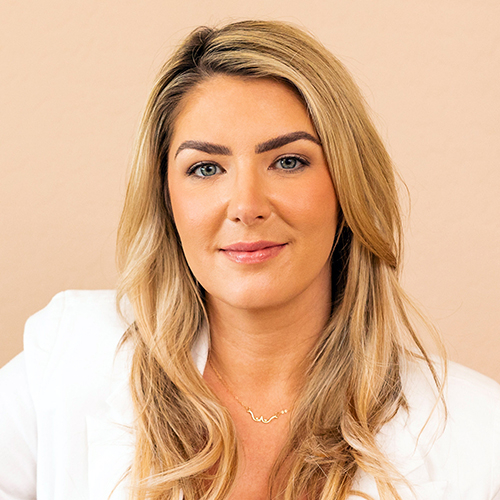

Jacqueline Kincer is the founder of Holistic Lactation where she runs a busy practice, manufacturers herbal supplements for lactation, and supports breastfeeding families worldwide. She's also the host of the podcast Breastfeeding Talk: Milk. Mindset. Motherhood. and creator of the online breastfeeding community, The Nurture Collective. Jacqueline's passion has been to create functional breastfeeding outcomes and expand access to lactation knowledge across the globe.
Topic: Inside the Infant Mouth: Oral Assessment & Function - [View Abstract]
Topic: Tongue Tied Untied: Creating Functional Breastfeeding Outcomes - [View Abstract]
1. Explain how tongue tie creates breastfeeding dysfunction through compensations of the orofacial complex
2. Describe when to use oral exercises to correct oral dysfunction, and what things should be addressed with bodywork (and frenectomy)
3. Describe the process it takes to change brain-based feeding habits and create new motor learning post-frenectomy
In this presentation, Jacqueline demonstrates how tongue tie affects proper breastfeeding, specifically the mechanics of breastfeeding such as oral grasp, tongue extension, pressure generation, and more. You'll learn how to know which problems are issues that can be corrected with targeted oral exercises, or if bodywork is needed instead. We will also cover the timeline of habilitation in the weeks following frenectomy.
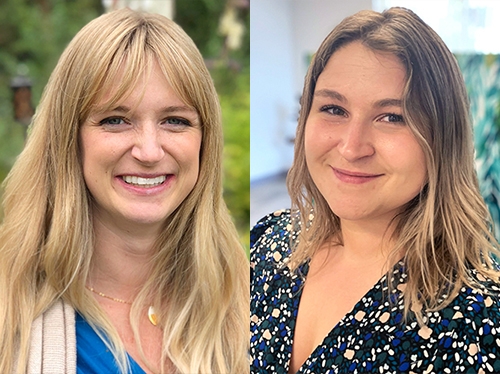

BreAnne is a Board Certified Family Nurse Practitioner and International Board Certified Lactation Consultant. She dedicates her practice to holistic and gentle care and has a special passion for lactation and nursing medicine, careful identification and treatment of infant oral restrictions (tethered oral tissue) and perinatal health. BreAnne is Co-Founder and Co-Owner of Pacific Wellness & Lactation where she focuses on complex lactation and breastfeeding problems and the release of tethered oral tissue. Her other professional passion includes Fertility care and treatment, specializing in cycle syncing and natural hormone therapies to help families achieve healthy pregnancy.
In her time outside of the clinic, BreAnne enjoys the local Pacific Northwest beach in her home town with her two young children and husband of 10 years. She is active in the community as a board member of the Breastfeeding Coalition of Snohomish County.
She earned her Master of Science in Nursing from Pacific Lutheran University and is board certified as a Family Nurse Practitioner by the American Academy of Nurse Practitioners (AANP).
Jennifer is a Registered Nurse and International Board Certified Lactation Consultant. She has extensive experience caring for adult populations both in the home and clinic setting. She specializes in lactation and postpartum care from birth through the nursing journey. She is trained in craniosacral therapy and incorporates this gentle touch therapy into much of her practice. She emphasizes preventive practices and is passionate about providing early support and alternative healing modalities to new families.
She earned her Bachelor of Science in Nursing and Master of Science in Nursing Education from Western Governors University.
When she is not working in her clinic she enjoys spending time outdoors in her garden, getting centered through yoga, and volunteering with the local Breastfeeding Coalition of Snohomish County. With a strong dedication to advancing her practice, Jennifer will be continuing her education to obtain her ARNP license in the Fall of 2020.
1. Recognize indications for frenotomy
2. List components of exam related to oral restriction
3. List benchmarks for successful procedure
What is a complete tongue tie release? What is the benchmark for a successful procedure? These are questions that are not often asked or clarified when discussing oral restrictions like lip and tongue tie. In their absence, the benchmark becomes how the wound site appears visually (how large the diamond is) when really, what needs to be discussed is the outcome related to the initial indication for the procedure as well as the actual function of the released structure. As lactation and breastfeeding professionals, this means the outcome related to breastfeeding and the real function of the tongue. For some this might mean more maternal comfort with latch, improved infant milk transfer at breast, reduction of reflux symptoms after feedings, increased maternal milk supply and more. In this lecture we will discuss our clinical experience in the evaluation, treatment and care of infants receiving frenotomy and frenectomy procedure as it relates to breastfeeding specific outcomes. Our clinic specializes in breastfeeding medicine and infant oral restriction and provides scissor and laser release in office. Our lecture reviews an audit of our services and outcomes and includes photos of types 1 through 4 tongue tie, videos of releases for differing indications and outcomes related to maternal pain pre and post infant procedure, infant pain post procedure and LATCH score. We also review use of CST in office as well as other manual therapies to improve infant feeding. The goal of the lecture is to better establish what constitutes a successful procedure and a full release.
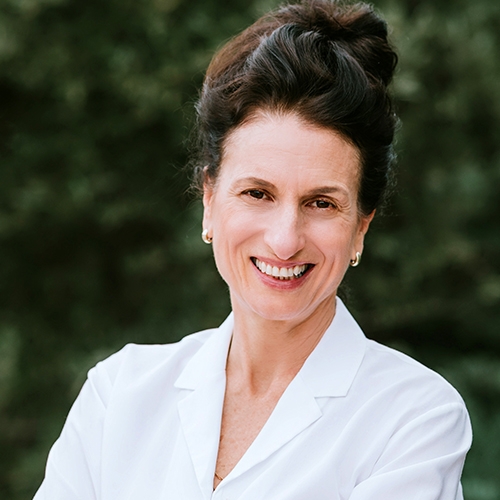

Dr. Gina Weissman began her career as a dentist, receiving her training at The Hebrew University Hadassah Medical School, Jerusalem. She is also a RN nurse and has been working as an IBCLC, Certified Lactation Consultant, since 1999. She teaches courses in human lactation for both medical professionals and future lactation consultants, mentoring them in preparation for the international exam of the IBCLC. Dr. Weissman councils mothers and releases tongue ties at her private breastfeeding clinic, HalavM. She is an expert in teaching mothers Instinctive Breastfeeding and the author of Mother's Milk, a Video Guide to Breastfeeding (Hebrew/Arabic/English).Dr. Weissman is an international lecturer and the president of the Israeli Association of Certified Lactation Consultants.She lives in Israel with her husband Amir and four sons.
Topic: Understanding the Complexities of Tongue Tie: 2020 Updates - [View Abstract]
1. Distinguish between anterior and posterior tongue tie based on the updated literature.
2. Describe physical and functional characteristics that lactation specialists must assess when considering whether to refer an infant for evaluation and possible treatment of posterior tongue tie.
3. List components that must be included in a lactation management plan whenever a lactation specialist is concerned that an infant may have a posterior tongue tie.
Background
As far as anterior tongue tie is concerned, there is a growing, vast body of knowledge that has been validated. As for posterior tongue tie, the scientific evidence is lacking, and the assessment tools are not uniform among practitioners.
Medical diagnoses are not part of the scope of practice of Lactation Consultants. Hence, there is a lot of confusion among professionals (both Drs and Lactation Consultants), resulting in over diagnosis and over treatment on the one hand, and under treatment on the other.
Purpose
• To present a unique perspective of an experienced Lactation Consultant who is also a dentist, experienced in diagnosing and treating various types of tongue ties
• To share a conservative clinical thinking process
• To examine the effects of frenotomy on breastfeeding and nipple pain
• To compare the effect of frenotomy on anterior verses posterior tongue ties.
Approach
The discussion will focus on the clinical dilemmas regarding releasing posterior tongue ties and their implications for breastfeeding.
Clinical cases of babies with posterior tongue ties will be shown to demonstrate how exclusive breastfeeding can be achieved in clinical cases with posterior tongue ties that were not released. Cases of anterior and posterior tongue ties that had been released although breastfeeding was going well will also be shown.
Conclusions
Frenotomy is a predictable procedure for anterior tongue tie. However with posterior tongue ties, the outcome of nipple pain and breastfeeding latch are influenced also by different factors.


Meg is the mother of three breastfed boys and lives with her husband and children in QLD, Australia. She is an International Board Certified Lactation Consultant (IBCLC) in private practice and works with parents to help them reach their breastfeeding goals. She has a degree in psychology and her prior work was is in counselling and sexual health. She was a La Leche League Leader (breastfeeding counsellor) for seven years before becoming an IBCLC. Meg is the author of two books including, "Boobin' All Day...Boobin' All Night. A Gentle Approach To Sleep For Breastfeeding Families". She has published articles in numerous parenting magazines and websites. She was also filmed for a short documentary, "Lactaboobiephobia", based on one of her blog posts which was released in 2016.
Topic: Breastfeeding With A Tongue Tie. How Can We Help When A Tie Revision Is Not Possible? - [View Abstract]
Topic: Exclusively Breastfeeding Triplets-Case Studies - [View Abstract]
Topic: Social Media Backlash – Addressing Emotionally Charged Responses - [View Abstract]
Topic: What to Do When the Laid-Back Breastfeeding Position Doesn’t Work…Self Attachment, the Flipple Technique and the Koala Hold All With a “Hands Off” Approach - [View Abstract]
1. List the positions that tend to work best for babies who are having trouble latching
2. Explain how planning with the family helps leads to better outcomes.
3. Discuss possible challenges that might arise and how to best support families through them if.
Breastfeeding a child with a tongue can be very straightforward with no challenges for mother or baby, or can bring numerous challenges and problems. There are circumstances when a tongue tie procedure is not possible or the parents choose to avoid having the procedure, yet want to continue to breastfeed if possible. There are ways that we can help! This presentation involves practical tips and suggestions for health care professionals on how to best support families in this situation including how to best cover different possible outcomes, forming plans and working through challenges.
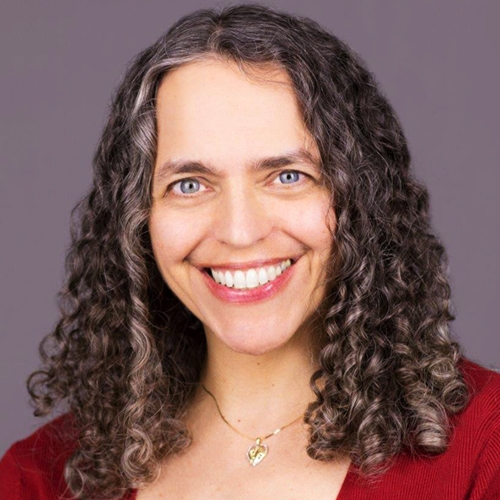

Catherine Watson Genna BS, IBCLC is an International Board Certified Lactation Consultant in private practice in New York City. Certified in 1992, Catherine is particularly interested in helping moms and babies breastfeed when they have medical challenges and is an active clinical mentor. She speaks to healthcare professionals around the world on assisting breastfeeding babies with anatomical, genetic or neurological problems. Her presentations and her writing are enriched by her clinical photographs and videos. Catherine collaborates with Columbia University and Tel Aviv University Departments of Biomedical Engineering on research projects investigating the biomechanics of the lactating nipple and various aspects of sucking and swallowing in breastfeeding infants. She is the author of Selecting and Using Breastfeeding Tools: Improving Care and Outcomes (Praeclarus Press 2009) and Supporting Sucking Skills in Breastfeeding Infants (Jones and Bartlett Learning 2008, 2013, 2017) as well as professional journal articles and chapters in the Core Curriculum for Lactation Consultant Practice and Breastfeeding and Human Lactation. Catherine served as Associate Editor of the United States Lactation Consultant Association’s official journal Clinical Lactation for its first seven years.
Topic: Breastfeeding Strategies for Tongue-tied Infants - [View Abstract]
Topic: Critical Assessment of Apparent Tongue-Tie - [View Abstract]
Topic: Introduction to Cervical Auscultation - [View Abstract]
Topic: Lactation Support for Infant Biomedical Challenges - [View Abstract]
Topic: Organization of tongue movements before and after frenotomy for posterior tongue-tie: an Ultrasound analysis - [View Abstract]
Topic: Positioning and Latch for Breastfeeding - [View Abstract]
Topic: Ultrasound Analysis of Sucking: Tongue-Tie and Confounders - [View Abstract]
Topic: Using Breastfeeding Supplementers - [View Abstract]
1. Describe the kinematics (organization of tongue movements in space and time) of normal breastfeeding.
2. List validated assessment tools to identify ankyloglossia.
3. List 4 conditions that can be confused with tongue-tie.
Tongue tie is one potential cause of breastfeeding difficulties, but most authorities fear that frenotomy is overused. This presentation explores research on the role of the tongue during normal breastfeeding; briefly reviews validated assessment tools, and proposes other management, structural and medical issues that impact tongue mobility and feeding.
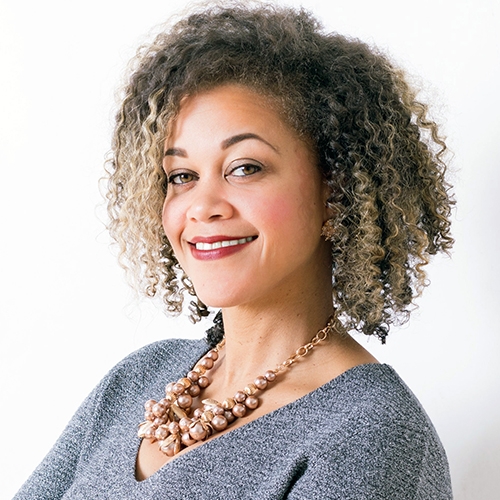

Jenn Bio - International Board Certified Lactation Consultant and Birth Doula, Founder and Owner of Feed the Babes, LLC offers in-home and clinic-based, skilled breastfeeding support and birth doula services www.feedthebabes.com. Jennifer also serves as a Michigan Breastfeeding Network (MIBFN) Project Manager and as Co-Founder of the Southeast Michigan IBCLC's of Color. The married mother of two happy, healthy, breastfed children has made it her life mission to disrupt the broken system that plagues the families that are impacted by systemic racism. She's committed to showing up in the community, daily, and, by mentoring aspiring Black IBCLC’s, supporting equipping and empowering future trailblazers to change the world. She is a dual Canadian and American citizen, leader, public speaker, consultant, clinician, advocate, and educator. Collectively as a family, she, her husband and two children enjoy growing their own food, photography, videography and serving their community. They reside in Metro-Detroit, Michigan.
1. Explain the importance of early assessment in the clinical management of breastfeeding.
2. Identify equitable referral strategies for timely diagnoses of ankyloglossia.
3. Discuss solutions to effectively refer and collaborate across care teams.
During this presentation, we will discuss how best practices in early referral of skilled lactation support can improve feeding outcomes. Centering Black and Indigenous families by collaboratively working together with early assessment, community referrals and continuum of care across care teams can prevent improper diagnoses of ankyloglossia which can be harmful for families seeking to reach their individual feeding goals.
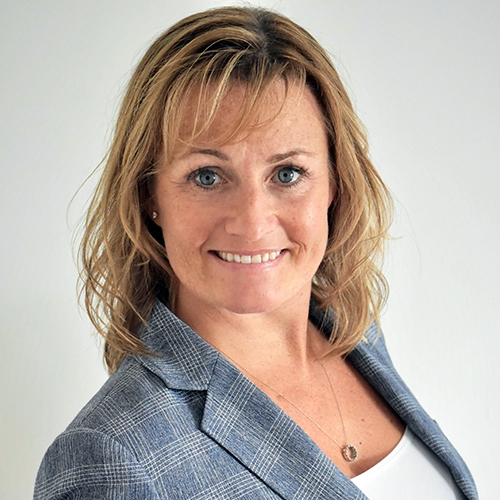

Dr. Jenna Davis is a Family Chiropractor and owns a highly successful family wellness multidisciplinary clinic, Acorn Family Health and Wellness Centre, in Oakville, Ontario. Dr. Davis has a focus on Preconception, Infertility, Pre- and Postnatal care, Pediatrics, Retained Primitive Reflexes, Infant TMJD and Women’s Health. Dr. Davis loves working with families in all stages and has a unique ability to educate her practice members so they feel heard, honoured and understand how chiropractic can improve their function and life. She has a passion for educating and is an avid lecturer both in and out of her office. Dr. Jenna Davis is a mother, author, entrepreneur, educator and is a sought after speaker internationally sharing information on many topics including the Power of Communication, Infertility, Pediatrics, Retained Primitive Reflexes, Infant TMJD, TOTs (Tethered Oral Tissues), Team Approach to Health and Wellness, and Women’s Health. Dr. Davis created a technique in 2016, the P.I.P.S. Technique (Pediatric Intraoral Palate Specific Technique) specifically to assist with Infant TMJD, Sphenoid Fault, Tongue-tie, Lip-tie, Dural Tension and Oral Motor and Oral Sensory Challenges. Dr. Davis has develooped a unique approach to combine sensory, motor, developmental and function into the care and approach to her practice members. Dr. Davis is also the creator of Baby Boom Creations, a company that develops and provides products to assist patients and practitioners in office and at home. Dr. Davis has been a featured speaker on many stages in Canada, the United States, Australia and the UK. She prides herself on her continual quest for the newest information and research and is a life long learner. Dr. Davis has done extensive postgraduate work and continues to expand and grow her knowledge base and resource team to give the best care possible to her practice members and the audiences she has the honour to present to.
1. Analyze the connection between the tongue and our posture.
2. Describe the connection between ankylofrenula and the growth, positioning and development of cranial structures including the mandible and maxilla.
3. Define Pediatric TMJD.
Every day in practice Dr. Jenna Davis witnesses how TOTs and Pediatric TMJD, when not addressed, may lead to postural changes, mouth breathing, and may impact craniofacial growth, posture, spinal alignment, development and lead to overall compensation. Ankylofrenula and associated tension is rarely a solitary issue. In this session, we will discuss how these infants may present, the examination process, discuss intraoral work including the PIPS (Pediatric Intraoral Palate Specific) Technique, assessment protocols, and Chiropractic Bodywork. Dr. Jenna will demonstrate other incredibly important exercises parents can add at home to assist with the tension and lack of function often associated with ankylofrenula and TMJD. Learning to assess intraorally is critical for long term improvement at all ages. In this session Dr. Davis will discuss intraoral, palate, and cranial to sacrum assessments and chiropractic adjustments (chiropractic bodywork) that can be done to assist with changes related to Tongue Tie, Pediatric TMJD and associated dural tension. Finally strategies for communication about bodywork, your findings and recommended strategies will be shared to maximize and strengthen your relationship with patients/families, professionals you may co-manage this special population with and your community.
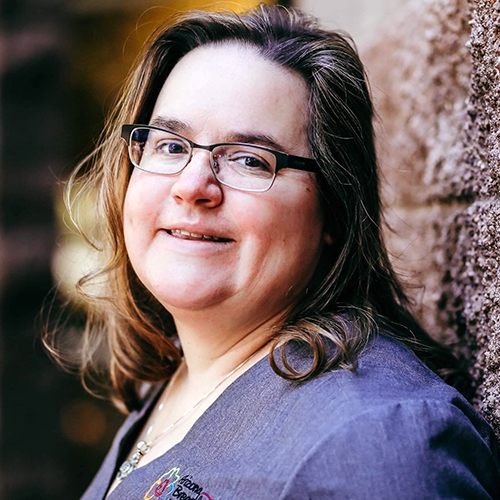

Dr. Cara graduated from Arizona State University of with Doctor of Nursing Practice degree. She is a board certified Family Nurse Practitioner in addition to having her IBCLC certification. Dr. Cara is also a diplomate of the American Board of Laser Surgery, specializing in “Oral Surgery in Infants, Toddler, and Adults. Dr Cara describes her career as a diversifying adventure: research, teaching, nursing, and now breastfeeding medicine specialist. She strives to provide meaningful, evidence-based care to mother-baby dyads. Her mission is to support mothers where they are at and help them journey into the breastfeeding relationship they desire. She strives to make sure that each patient is able to reach their desired goal and have an amazing breastfeeding relationship.
1. Define TOTs reattachment related to functional assessment.
2. List types and reasons for reattachment.
3. Discuss methodology and timing for addressing reattachment: bodywork, functional therapy, re-release.


Robyn Merkel-Walsh, M.A., CCC-SLP/COM® is a Licensed Speech Pathologist with over 25 years of experience. She is employed full time by the Ridgefield Board of Education and runs a private practice in Ridgefield, NJ. She is also an author, lecturer, and consultant for TalkTools® . Robyn specializes in Oral-Placement, feeding, and orofacial myofunctional disorders in the pediatric population. Her publications include, SMILE (Systematic Intervention for Lingual Elevation), Art Talk, Handy Handouts, OPT-S Kit, and she co-authored Sensory Stix, A Sensory-Motor Approach to Feeding, Functional Assessment and Remediation of Tethered Oral Tissues and Oral Placement Therapy Goals for Speech Clarity. She has also written several articles for the TalkTools® website, The ASHA Leader, and Advance Magazine for Speech Pathologists. She has been published five consecutive years at the annual convention of the American Speech-Language and Hearing Association. Robyn received both her undergraduate and graduate degrees from Montclair State University, where she was later invited to be an adjunct/clinical supervisor. She has also taught classes and/or as a clinical supervisor for: Bergen Community College, Seton Hall University and Malloy College. She is a member of American Speech-Language and Hearing Association, American Academy of Private Practice in Speech Pathology and Audiology, New Jersey Education Association, International Association of Orofacial Myology, Oral Motor Institute, Ankyloglossia Bodyworkers , International Consortium of Ankylofrenula Professionals and The Bergen County Apraxia Association. She served a term on the New Jersey Speech and Hearing Association Board of Directors and was the private practice co-chair. She is also the Board Chair of the Oral Motor Institute and the Associate Editor of the International Journal of Orofacial Myology.
1. List the goals of Active Wound Management
2. Describe the goals of neuromuscular re-education
3. Explain who is best to address each phase of post-op care.
There is a better understanding within the fields of medicine and dentistry, lactation, speech-pathology, occupational and physical therapies that functional assessment and treatment is critical for optimal lingual, buccal and labial frena releases. Semantics and terminology however are often confused regarding a treatment protocol. Post-op TOTs care has two phases: 1) Active Wound Management to maintain the integrity of the wound and avoid scarring and re-attachment and 2) Neuromuscular Re-Education to address the underlying muscle and motor- based deficits that are secondary to the oral restriction(s). Both stages of treatment must be considered. This course will outline the two stages, review national scopes of practice for various professionals involved in TOTs care and discuss guidelines for referrals to team members. Specific techniques will be reviewed and categorized as to which stage of treatment is being addressed, which sometimes may overlap.
Accreditation
CERPs - Continuing Education Recognition Points
GOLD Conferences has been designated as a Long Term Provider of CERPs by the IBLCE--Approval #CLT114-07. This program is approved for 10 CERPs (7 L-CERPs, 3 R-CERPs).
If you have already participated in this program, you are not eligible to receive additional credits for viewing it again. Please send us an email to [email protected] if you have any questions.
Tags / Categories
(IBCLC) Clinical Skills, (IBCLC) Infant, (IBCLC) Infant, (IBCLC) Maternal, (IBCLC) Public Health and Advocacy, Breastfeeding the Tongue Tied Infant, Differential Diagnosis & Management, Frenotomy & Tongue Tie Treatment, Pre & Post Care, Tongue & Lip Tie Assessment
How much time do I have to view the presentations?
- The viewing time will be specified for each product. When you purchase multiple items in your cart, the viewing time becomes CUMULATIVE. Ex. Lecture 1= 2 weeks and Lecture Pack 2 = 4 Weeks, you will have a total of 6 weeks viewing time for ALL the presentations made in that purchase.
- Time for viewing the talks begins once you purchase the product. For Live Webinars & Symposiums, the viewing period begins from when the live event takes place. Presentations can be accessed 24/7 and can be viewed as many times as you like during the viewing period.
What are bundled lectures?
- Presentations may be available individually or via a bundled package. Bundled lectures are a set of lectures that have been put together based on a specific category or topic. Some lectures will be available in both individual and lecture form, whereas others will be available only via a bundled lecture pack.
Will there be Handouts?
- YES! Each lecture comes with a PDF handout provided by the Speaker.
Some lectures include a Q&A, what does that mean?
- During our online conferences, presentations that occur live are also followed by a short 15 minute Question & Answer Session. The Speaker addresses questions that were posted by Delegates during the presentation. We include the recording of these Q&A Sessions as a bonus for you.
How can I receive a Certificate?
- If this presentation offers a certificate, once you are done viewing the lecture or the lectures within a bundle, submit your attendance record in order to be able to download your certificate. You'll be able to see which credits are offered for the lecture by hovering over the "Credits Available" link within the "Speakers & Topics" tab.
Professionals that selected this package also viewed

|
|

|












